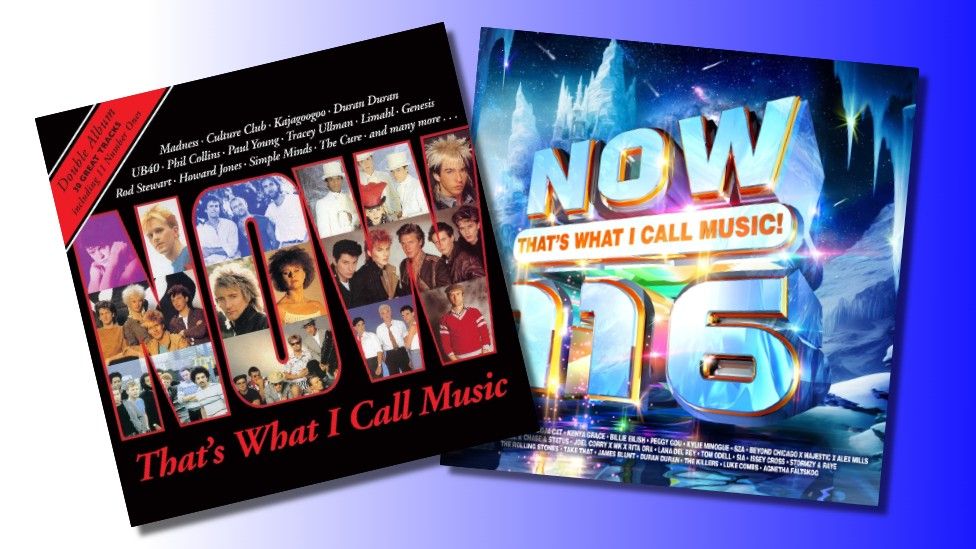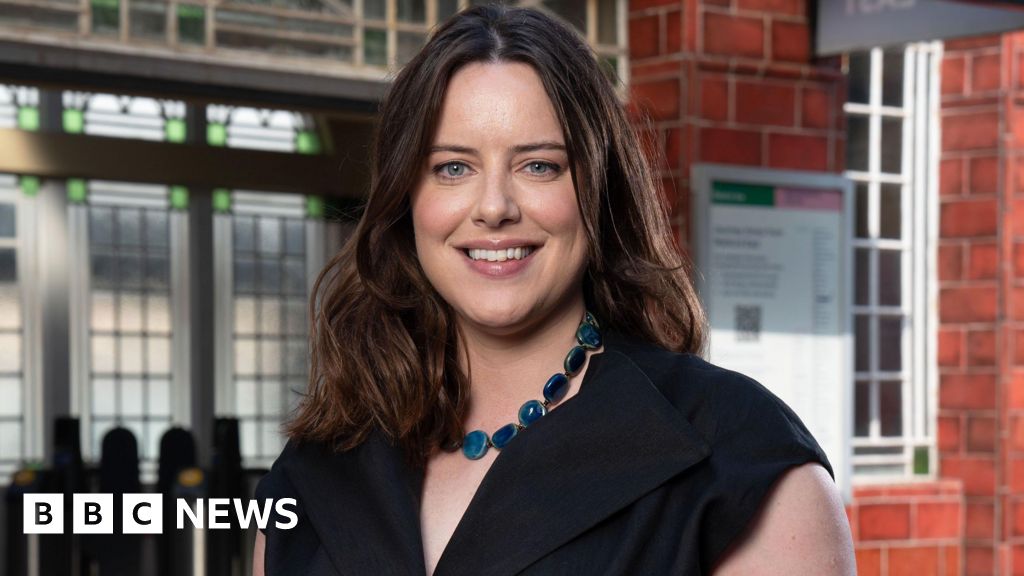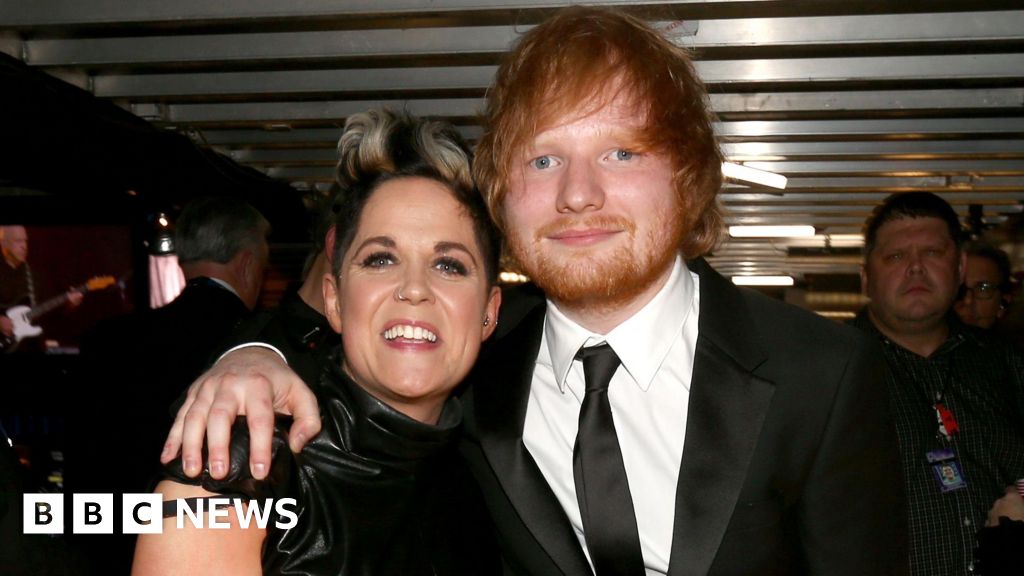ARTICLE AD BOX
 Image source, Now Music
Image source, Now Music
There have been 116 instalments of the Now That's What I Call Music series
By Mark Savage
BBC Music Correspondent
Now That's What I Call Music is celebrating a milestone birthday.
The biggest-selling compilation album in the world turns 40 on Tuesday 29 November, after 116 instalments and more than 120 million copies sold.
The first album contained hits like Karma Chameleon, Red Red Wine and Total Eclipse Of The Heart. Since then the series has anthologised everyone from Queen to Olivia Rodrigo and even Bob The Builder.
In a pre-playlist era, the albums were an essential way of staying up-to-date, and even discovering new music.
As the series enters its fourth decade, here are 40 facts about its hits, misses and howlers.
Now that's what I call the early days
1) Compilation albums existed before Now That's What I Call Music came along but they were often full of knock-off cover versions, or missing major hits due to licensing issues. By contrast, Now was a joint venture between two of the UK's biggest record labels, EMI and Virgin, giving compilers immediate access to the day's biggest songs.
2) The series took its name from a 1920s advertising poster for Danish bacon, featuring a pig saying. "Now, That's What I Call Music" as it listened to a chicken singing. Virgin Records' owner Richard Branson had given it to his cousin and the company's co-founder Simon Draper several years earlier, and it hung behind his desk at the label's offices. "The joke was I couldn't really start the day without eggs and bacon," Draper told the BBC in 2018.
The 1930s poster that inspired Now That's What I Call Music
3) The first track on the first album was You Can't Hurry Love by Phil Collins. He went on to appear on a further 12 Now albums.
4) Of the 28 artists who featured on that first edition, 11 have yet to make a second appearance, including hip-hop group The Rock Steady Crew and Aussie rock band Men At Work.
5) The record entered the charts at number seven before climbing to number one, where it remained for five weeks. A new era was born.
6) The success made other record labels sit up and take notice. In 1984, CBS and WEA launched a rival series, titled The Hits, which focused on big American acts like Madonna, Prince and Bruce Springsteen. The first edition topped the charts for seven weeks and denied Now That's What I Call Music 4 the coveted Christmas number one slot.
Image source, Getty Images
Image caption,One of the series' most famous hold-outs
7) The rivalry continued for years, leaving some strange gaps in the Now series. Michael Jackson has only appeared twice: On Now 4, with the drippy 1970s ballad One Day In Your Life, and again on Now 88 with the posthumous single Love Never Felt So Good.
8) Another big hold-out is Madonna, who has never featured on any of the main, numbered Now albums. However, she did sneak onto the tracklist of the most recent release, Now 116, as a featured artist on Sam Smith's single Vulgar.
9) Now That's What I Call Music 4 was the first edition to be released on CD. With record labels reluctant to give approval to the new format, it ended up as a single disc containing only 15 songs. About 2,000 were sold - and pristine copies of the CD now change hands for up to £600.
10) The MiniDisc format was introduced with Now 43 (July 1999) and ended with Now 48 (April 2001). Now 62 was the first compilation to be available as a download, in 2005. The last edition to be available on cassette was Now 64 in 2006.
Now that's what I call big numbers
Image source, BBC / Now Music
Image caption,The Now series has sold more than 120m copies in the UK since it launched in 1983
11) The numbered volumes have spent a combined total of 771 weeks at number one. Only Now 4 and Now 115 have missed the top spot.
12) More than 120 million Now albums have been sold. Apparently over half the population have either bought one (or been given) one; and the average household owns four Now albums.
13) Including the latest edition, Now 116, the compilations have featured 2,409 different artists, and 675 UK number one singles.
14) Robbie Williams has appeared more times than anyone else - a grand total of 38. That includes 32 hits as a solo artist, six with Take That, and one each as a member of the charity projects Helping Haiti (Now 75), Justice Collective (Now 84), Artists for Grenfell (Now 97), and World Music project 1 Giant Leap (Now 52).
15) Kylie Minogue is tied with Robbie for the most appearances as a solo act. She made her debut with I Should Be So Lucky on Now 11, and is still going on the most recent release, Now 116, with Tension.
16) Girls Aloud have clocked up the highest number of consecutive appearances - 13 in total - with a track on every album from Now 54 to Now 66.
Image source, Getty Images
Image caption,Robbie and Kylie are the most successful artists on the Now compilations
17) Little Mix are the most featured group, with 28 appearances, ahead of Coldplay (24), Girls Aloud (21) and U2 (20).
18) The most successful volume to date is 1999's Now That's What I Call Music 44, which sold 2.3 million copies and is the biggest selling compilation album ever. It opened with Britney Spears' ...Baby One More Time and also featured Shania Twain's That Don't Impress Me Much, Moloko's Sing It Back and Steps' Tragedy.
19) 2008's Now That's What I Call Music! 70 sold 383,002 copies in seven days - the biggest first-week sales of any Now album. It featured hits like Estelle's American Boy, The Ting Tings' That's Not My Name and Flo Rida's Low.
20) Don McLean's American Pie is the longest song to feature on a Now album, clocking in at 8 minutes and 34 seconds. Wings by the Jonas Brothers is the shortest, at 1 minute and 58 seconds.
Now that's what I call trivia
21) As well as the main Now series, the brand has released more than 260 themed compilations, including Now That's What I Call Eurovision, Now Karaoke and Now That's What I Call Classic Soul.
22) The most popular Now album is Now That's What I Call Christmas, which has shifted 4.3m copies. If compilation albums were included in list of the UK's best-selling records, it would take ninth place, nestling between Michael Jackson's Bad and Dire Straits' Brothers In Arms.
23) Willow Smith is the youngest artist on any Now compilation. She was just nine years old when Whip My Hair featured on Now 78 (2011); and had to wait more than a decade for her second appearance, with Meet Me At Our Spot on Now 111 (2022).
24) Captain Sir Tom Moore is the oldest singer to feature on the compilation, having reached his 100th birthday when he sang alongside Michael Ball on the charity cover version of You'll Never Walk Alone (Now 106).
Image source, Getty Images
Image caption,Duran Duran appear on both the first and most recent Now albums
25) Duran Duran have the longest career span on the series. They debuted on the very first Now album with their number one hit Is There Something I Should Know, and are back on the latest volume with Black Moonlight - a single which failed to make the top 75.
26) It would take 300 hours to listen to all 116 volumes of the Now That's What I Call Music series back to back.
27) The first few albums featured artist montages on the cover, but that practice was abandoned after Now 5, because the track list is often finalised so late that any problems in securing images could potentially delay the release.
28) While recent album covers have been computer-generated, early instalments were created for real. Now 10 featured a custom-made neon sign, while Now 12 was shot at a leisure centre. "We actually stuck the number 12 to the bottom of a swimming pool, painted some polystyrene balls with the Now logo and had a photographer take a photo that would become the cover," said artwork designer Neal Martinez.
Image source, Alamy
Image caption,The artwork changed as the series developed, until the introduction of the 3D lettering on Now 20
29) The Now team pay a lot of attention to how the albums are sequenced. "The perceived wisdom about compilations is that, when somebody picks one up, they look at the first half-dozen tracks and the last two or three tracks and make a decision accordingly," says Steve Pritchard, who has been the custodian of the series for more than 20 years. "So the sound quality and the running order is important, but the opening half-dozen tracks are what really sells the album."
30) The series was so successful that compilation albums were quarantined into a separate chart in 1999. Ashley Abram, who compiled volumes 2 to 81, says the decision was forced by US record labels, who couldn't understand why superstar artists were being kept off the top of the charts by Now.
Now that's what I call middle age
31) The success of the UK albums has inspired localised variants around the world - beginning with the Netherlands and Spain in 1984, Japan in 1988, and the US in 1998.
32) Over the years, a tradition has arisen of the second disc housing more experimental and edgy songs. "Does disc two have the cooler stuff? Very loosely," says Abram. "When we started all we were trying to do was sequence the songs in an interesting way.,.. but if you keep swapping the genres too much, it's perceived as too hard to listen to. So we tended to have all the pop stuff together."
33) As it ages, the Now series has become a totem of popular culture. The 48th volume even became a pivotal plot point in an episode of Peter Kay's Car Share, when supermarket employee Kayleigh Kitson (Sian Gibson) declared it was her favourite album. As a result, the record re-entered Amazon's compilation chart on the strength of second-hand sales (the album was out of print) with prices rising from 11p to more than £20.
The compilation had a starring role in Peter Kay's Car Share
34) The series has been running so long that several songs have appeared more than once. The first was Alive and Kicking by Simple Minds, which cropped up on both Now 6 and Now 23. More recently, two cover versions of Tracy Chapman's Fast Car have appeared on different albums, the first by Jonas Blue on Now 93; and the second by Luke Combs on Now 116.
35) The generation-spanning series has also become a family affair. Neneh Cherry and her daughter Mabel have both appeared on the series; as have Bob Marley, his son Damian and grandson Skip.
36) Although downloads and streaming appear to pose an existential threat to the Now series, the numbered volumes still sell in big quantities. In 2021, Now 108 shifted 25,876 copies in its first week - that's 10,000 more than the week's official number one album, Ben Howard's Collections from the Whiteout.
37) DJ Mark Goodier, who has voiced adverts for the Now series since 1992, says it still has a place in the market. "One of the reasons music stands the test of time is that we have personal experiences associated with songs - so people who are deeply knowledgeable about music can curate playlists better than Artificial Intelligence. AI hasn't had a record played at a funeral, AI doesn't know what song was playing when you walked down the aisle. The people who are really good at selecting records on radio, on a streaming service or on a compilation album, are very few and far between."
Image source, Ebay
Image caption,Full sets of the Now series often sell for hundreds of pounds
38) In the same year, the company launched its "Yearbook" series, which dedicates four CDs to the hits of a specific year. Running from 1973 to 1992 (so far), these albums have marked the first appearance of 700 songs on any Now compilation.
39) Those compilations sometimes throw up odd anomalies. Terence Trent D'Arby's hits are now credited to Sananda Maitreya, the name he chose in 2001; while Eurythmics now insist on the awkward billing of "Eurythmics, Annie Lennox, Dave Stewart".
40) If everything goes to schedule, Now 120 will arrive in March 2025, with Now 200 due in time for Christmas 2051. But in 1995, the numbers were almost dropped altogether. According to EMI executive Barry McCann, the label was concerned that people would think that double digits would make the series seem outdated, as no compilation series had run that long. In fact, the numbers became an asset. Everybody has a favourite Now album. What's yours?

 1 year ago
38
1 year ago
38








 English (US) ·
English (US) ·